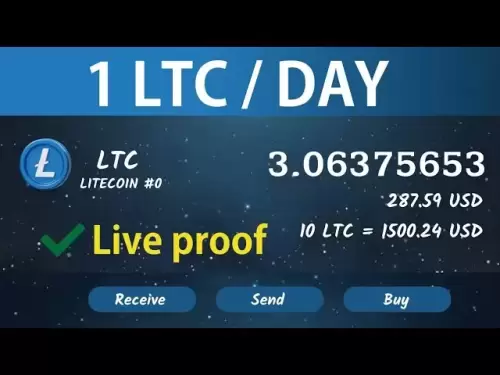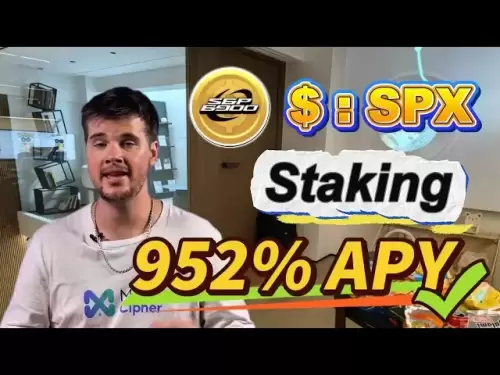-
 Bitcoin
Bitcoin $118900
0.42% -
 Ethereum
Ethereum $3710
-2.88% -
 XRP
XRP $3.513
-2.96% -
 Tether USDt
Tether USDt $1.000
-0.01% -
 Solana
Solana $203.0
3.65% -
 BNB
BNB $765.5
-1.29% -
 USDC
USDC $0.9998
0.00% -
 Dogecoin
Dogecoin $0.2671
-4.18% -
 Cardano
Cardano $0.8817
-3.63% -
 TRON
TRON $0.3139
-0.64% -
 Hyperliquid
Hyperliquid $44.34
-5.45% -
 Stellar
Stellar $0.4637
-4.08% -
 Sui
Sui $3.908
-2.59% -
 Chainlink
Chainlink $19.34
-2.62% -
 Hedera
Hedera $0.2712
-3.77% -
 Avalanche
Avalanche $24.97
-4.13% -
 Bitcoin Cash
Bitcoin Cash $519.8
-1.48% -
 Shiba Inu
Shiba Inu $0.00001518
-3.74% -
 Litecoin
Litecoin $115.6
-2.21% -
 Toncoin
Toncoin $3.460
3.68% -
 UNUS SED LEO
UNUS SED LEO $8.977
-0.07% -
 Polkadot
Polkadot $4.460
-2.96% -
 Uniswap
Uniswap $10.53
-5.43% -
 Ethena USDe
Ethena USDe $1.001
0.01% -
 Monero
Monero $323.6
-0.36% -
 Pepe
Pepe $0.00001379
-2.60% -
 Bitget Token
Bitget Token $4.772
-3.90% -
 Dai
Dai $0.9999
0.00% -
 Aave
Aave $307.5
-6.66% -
 Bittensor
Bittensor $441.8
0.84%
How to buy SOL with local fiat currency (such as USD)?
To buy Solana (SOL) with USD, use centralized exchanges like Coinbase, decentralized exchanges via stablecoins, or peer-to-peer platforms for direct transactions.
Apr 21, 2025 at 08:35 pm
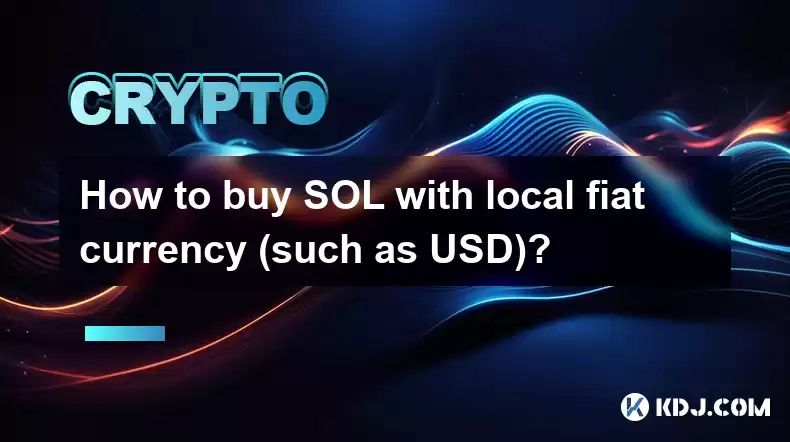
Buying Solana (SOL) with local fiat currency like USD can be a straightforward process if you follow the right steps. This article will guide you through the process of purchasing SOL using USD, detailing each step to ensure you can do so efficiently and securely. We will cover various methods, including using centralized exchanges, decentralized exchanges, and peer-to-peer platforms.
Using Centralized Exchanges to Buy SOL with USD
Centralized exchanges are often the most straightforward way to buy cryptocurrencies like SOL with fiat currency. Here’s how you can do it:
Choose a reputable exchange: Start by selecting a centralized exchange that supports SOL and allows deposits in USD. Popular choices include Coinbase, Binance, and Kraken. Ensure the exchange is available in your region and has a good reputation for security and customer service.
Create an account: Visit the website of your chosen exchange and sign up for an account. You will need to provide personal information such as your name, email address, and sometimes a phone number. Some exchanges may require you to complete a Know Your Customer (KYC) process, which involves submitting identification documents.
Deposit USD: Once your account is set up and verified, navigate to the deposit section of the exchange. Select USD as your deposit currency and follow the instructions to transfer money from your bank account to the exchange. This can usually be done via bank transfer, wire transfer, or sometimes through debit/credit card.
Buy SOL: After your USD deposit is confirmed, go to the trading section of the exchange. Look for the SOL/USD trading pair. Enter the amount of USD you want to spend, and the exchange will calculate how much SOL you can buy. Review the transaction details and confirm the purchase. The SOL will then be credited to your exchange wallet.
Using Decentralized Exchanges to Buy SOL with USD
Decentralized exchanges (DEXs) offer a more private way to buy SOL, but the process can be more complex. Here’s how you can do it:
Choose a DEX: Select a decentralized exchange that supports SOL and allows trading with USD. Examples include Uniswap and SushiSwap, though these typically require you to first convert your USD to a stablecoin like USDT or USDC.
Convert USD to a stablecoin: Since DEXs usually don’t support direct fiat deposits, you’ll need to convert your USD to a stablecoin. You can do this through a centralized exchange or a service like MoonPay. Deposit your USD into the centralized exchange, buy the stablecoin, and then withdraw it to your personal wallet.
Connect your wallet to the DEX: Use a compatible wallet like MetaMask to connect to the DEX. Ensure your wallet is funded with the stablecoin you purchased.
Swap stablecoin for SOL: On the DEX, find the SOL/stablecoin trading pair. Enter the amount of stablecoin you want to swap and review the transaction details. Confirm the swap, and the SOL will be sent to your wallet.
Using Peer-to-Peer Platforms to Buy SOL with USD
Peer-to-peer (P2P) platforms allow you to buy SOL directly from other users, often with more flexible payment options. Here’s how to use them:
Choose a P2P platform: Select a reputable P2P platform that supports SOL and USD transactions. Examples include LocalBitcoins and Paxful, though you may need to check if they support SOL specifically.
Create an account: Sign up for an account on the P2P platform. You will need to provide personal information and may need to complete a KYC process.
Find a seller: Browse the listings to find a seller offering SOL in exchange for USD. Pay attention to the seller’s reputation, the price they are offering, and the payment methods they accept.
Initiate the trade: Once you find a suitable offer, initiate the trade. Follow the platform’s instructions to send the USD to the seller. The platform will hold the SOL in escrow until you confirm that you have sent the payment.
Confirm the transaction: After the seller confirms receipt of the USD, the platform will release the SOL to your wallet. Ensure you review the transaction details and confirm everything is correct before finalizing the trade.
Security Considerations When Buying SOL with USD
When buying SOL with USD, it’s crucial to prioritize security to protect your funds and personal information. Here are some key considerations:
Use strong passwords: Ensure your exchange and wallet accounts are protected with strong, unique passwords. Consider using a password manager to generate and store complex passwords.
Enable two-factor authentication (2FA): Most reputable exchanges and wallets offer 2FA. Enable this feature to add an extra layer of security to your accounts.
Be wary of phishing attempts: Always double-check the URLs of the websites you visit and be cautious of emails or messages asking for your personal information or login credentials.
Use secure networks: Avoid conducting transactions over public Wi-Fi. Use a secure, private internet connection to minimize the risk of data interception.
Keep your software updated: Regularly update your operating system, browser, and any cryptocurrency-related software to protect against vulnerabilities.
Additional Tips for Buying SOL with USD
To enhance your experience and ensure a smooth transaction, consider the following tips:
Research fees: Different platforms charge different fees for buying and selling cryptocurrencies. Compare the fee structures of various exchanges and platforms to find the most cost-effective option.
Monitor market conditions: Cryptocurrency prices can be volatile. Keep an eye on the market to buy SOL at a favorable price. Use tools like price alerts to stay informed.
Diversify your payment methods: Some platforms offer multiple ways to deposit USD, such as bank transfers, credit/debit cards, or even cash. Having multiple options can be useful if one method is unavailable or incurs high fees.
Understand the withdrawal process: Before buying SOL, familiarize yourself with the process of withdrawing it from the platform to your personal wallet. Some exchanges may have minimum withdrawal amounts or additional fees.
Frequently Asked Questions
Q: Can I buy SOL with USD directly on decentralized exchanges?
A: Most decentralized exchanges do not support direct fiat deposits. You typically need to convert your USD to a stablecoin like USDT or USDC on a centralized exchange first, then use that stablecoin to buy SOL on a DEX.
Q: Are there any limits on how much SOL I can buy with USD?
A: The limits on buying SOL with USD can vary depending on the platform you use. Centralized exchanges often have daily or monthly limits based on your account verification level. P2P platforms may have limits set by individual sellers. Always check the specific limits of the platform you are using.
Q: How long does it take to buy SOL with USD?
A: The time it takes to buy SOL with USD can vary. Depositing USD into a centralized exchange can take a few days if done via bank transfer, while using a credit/debit card can be faster. Once your USD is deposited, buying SOL is usually instantaneous. On P2P platforms, the time can depend on the seller and the payment method used.
Q: Can I use cash to buy SOL with USD?
A: Some P2P platforms allow you to buy SOL with cash, though this is less common. You would need to find a seller who accepts cash and arrange a meeting to complete the transaction. Always prioritize safety when conducting in-person cash transactions.
Disclaimer:info@kdj.com
The information provided is not trading advice. kdj.com does not assume any responsibility for any investments made based on the information provided in this article. Cryptocurrencies are highly volatile and it is highly recommended that you invest with caution after thorough research!
If you believe that the content used on this website infringes your copyright, please contact us immediately (info@kdj.com) and we will delete it promptly.
- Telegram Crypto Wallet Lands in the US: A New Era for US Users?
- 2025-07-22 23:30:13
- BlockDAG, XRP Price, AVAX Price: What's the Buzz in Crypto Town?
- 2025-07-22 23:50:13
- Bitcoin DeFi Heats Up: Alkanes, Runes, and the ICP Connection
- 2025-07-22 23:50:13
- Meme Coin Mania: Dogecoin, PEPE, and the Crypto Presale Craze
- 2025-07-22 22:50:13
- Altcoin Rally Alert: Cardano, AVAX, and the Crypto Landscape in June 2025
- 2025-07-22 23:55:15
- Nicotine Pouches: A Sweet Threat to Teens' Gum Health?
- 2025-07-22 22:30:13
Related knowledge
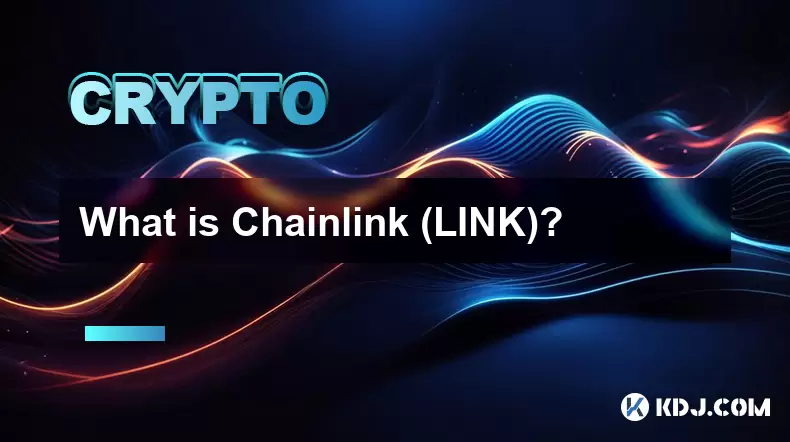
What is Chainlink (LINK)?
Jul 22,2025 at 02:14am
Understanding Chainlink (LINK): The Decentralized Oracle NetworkChainlink is a decentralized oracle network designed to bridge the gap between blockch...
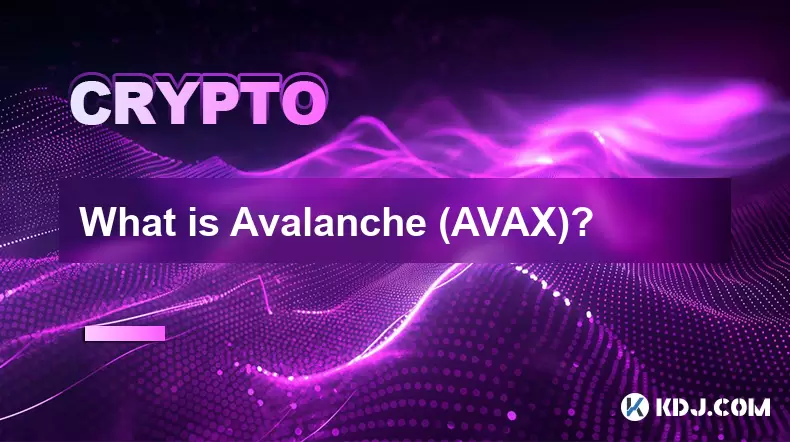
What is Avalanche (AVAX)?
Jul 22,2025 at 08:35am
What is Avalanche (AVAX)?Avalanche (AVAX) is a decentralized, open-source blockchain platform designed to support high-performance decentralized appli...
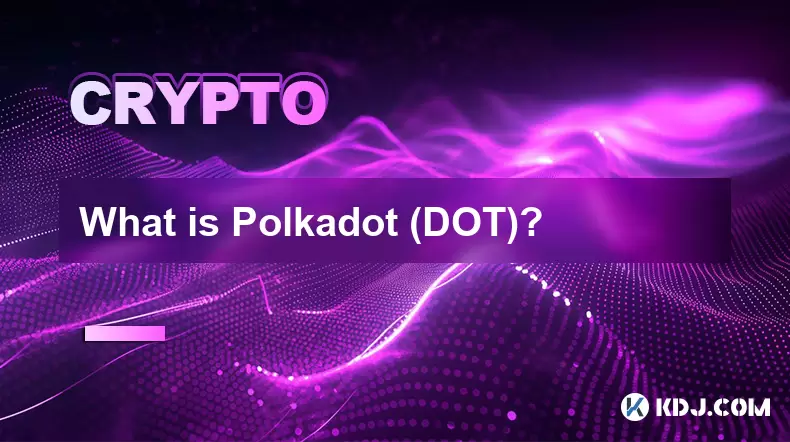
What is Polkadot (DOT)?
Jul 19,2025 at 06:35pm
Understanding the Basics of Polkadot (DOT)Polkadot (DOT) is a multi-chain network protocol designed to enable different blockchains to transfer messag...

What is Monero (XMR)?
Jul 21,2025 at 10:07am
What is Monero (XMR)?Monero (XMR) is a decentralized cryptocurrency designed to provide enhanced privacy and anonymity for its users. Unlike Bitcoin a...

How to add indicators to Ethereum chart on TradingView?
Jul 19,2025 at 07:15am
What Is an Ethereum Chart on TradingView?The Ethereum chart on TradingView is a visual representation of the price movement of Ethereum (ETH) over a s...
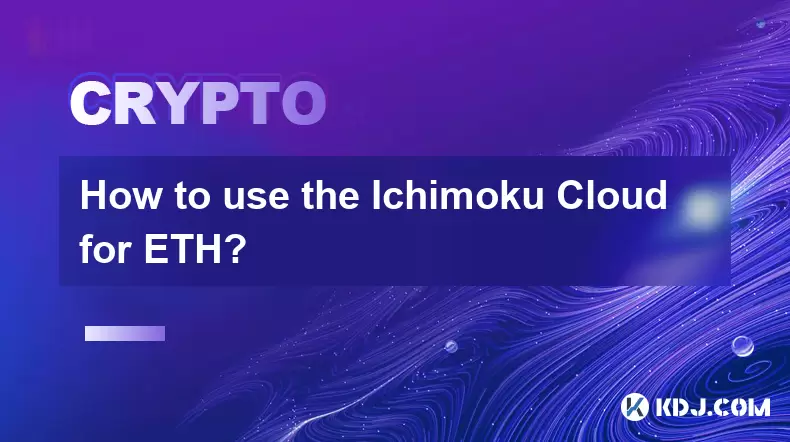
How to use the Ichimoku Cloud for ETH?
Jul 18,2025 at 09:56pm
Understanding the Ichimoku Cloud and Its ComponentsThe Ichimoku Cloud, also known as Ichimoku Kinko Hyo, is a versatile technical analysis tool that p...

What is Chainlink (LINK)?
Jul 22,2025 at 02:14am
Understanding Chainlink (LINK): The Decentralized Oracle NetworkChainlink is a decentralized oracle network designed to bridge the gap between blockch...

What is Avalanche (AVAX)?
Jul 22,2025 at 08:35am
What is Avalanche (AVAX)?Avalanche (AVAX) is a decentralized, open-source blockchain platform designed to support high-performance decentralized appli...

What is Polkadot (DOT)?
Jul 19,2025 at 06:35pm
Understanding the Basics of Polkadot (DOT)Polkadot (DOT) is a multi-chain network protocol designed to enable different blockchains to transfer messag...

What is Monero (XMR)?
Jul 21,2025 at 10:07am
What is Monero (XMR)?Monero (XMR) is a decentralized cryptocurrency designed to provide enhanced privacy and anonymity for its users. Unlike Bitcoin a...

How to add indicators to Ethereum chart on TradingView?
Jul 19,2025 at 07:15am
What Is an Ethereum Chart on TradingView?The Ethereum chart on TradingView is a visual representation of the price movement of Ethereum (ETH) over a s...

How to use the Ichimoku Cloud for ETH?
Jul 18,2025 at 09:56pm
Understanding the Ichimoku Cloud and Its ComponentsThe Ichimoku Cloud, also known as Ichimoku Kinko Hyo, is a versatile technical analysis tool that p...
See all articles























